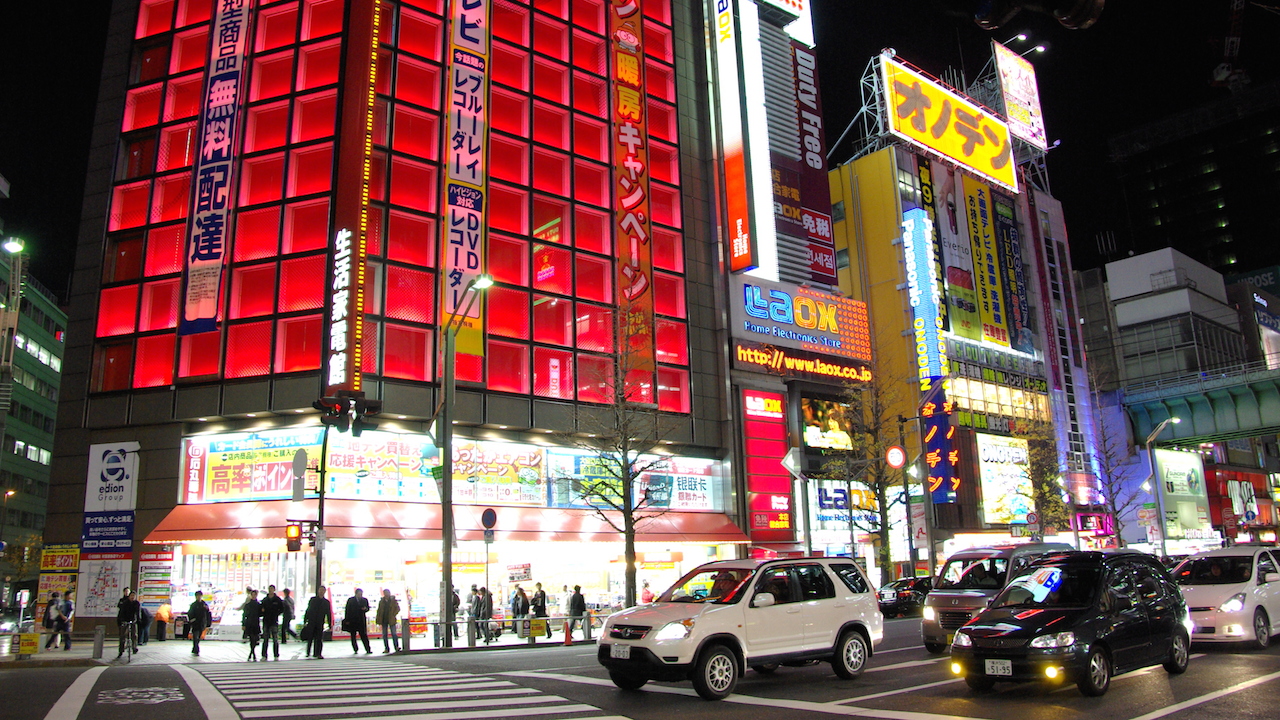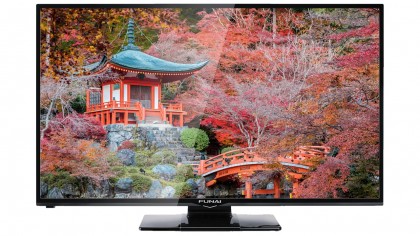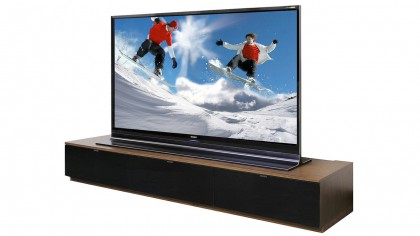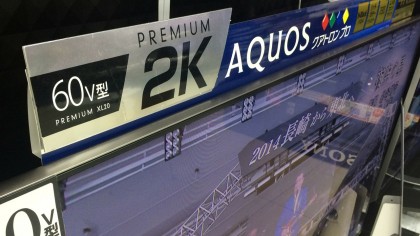Japan's AV retreat is home cinema's breaking heart
As Japan's electronic brands retreat from the world stage where does that leave the home cinema?

Home cinema and AV were created in Japan and, with the country committed to live 4K TV broadcasts in time for the Tokyo 2020 Olympic Games, it remains the capital of 4K.
That much seems obvious from a trip around the stores of Tokyo, Osaka and anywhere else in electronics-obsessed Japan. Each store is packed with primarily 4K TVs, with even Full HD TVs of old succumbing to the new era; when you do see a 1080p set (which is rarely) it's now labelled '2K'.
'Japan Premium' stickers are attached to exclusive high-end TVs, each supported by marketing campaigns featuring cultural imagery of geishas, pagodas and mountains. The message is clear; buy Japanese.
Not that there's much choice – Korean and Chinese TV brands are almost invisible here.

Embarrassment of riches
But this embarrassment of riches glosses-over a massive retreat of Japanese TV brands from the rest of the world.
The late 1990s saw CRT TVs explode in both size and quality thanks almost entirely to Japanese companies like Sony, JVC, Panasonic, Toshiba, NEC, Fujitsu, Hitachi and Sharp.
Pioneer then brought us the 42-inch plasma, and nothing was ever the same again.
Get daily insight, inspiration and deals in your inbox
Sign up for breaking news, reviews, opinion, top tech deals, and more.
But something cataclysmic has happened since then, and most of those companies escaped the TV business long ago. Under pressure from Korean and Chinese brands, Japan-made TVs sold around the world crashed from 35% in 2011 to just 20% last year.
Amid massive losses, Japanese companies that still market TVs have become little more than brand licensees outside of their home country.

Domestic domination
Luckily for anyone fearing the very worst for the most famous names in electronics, the Japanese public are exceptionally loyal.
Nobody in Japan wants to buy a TV made in China or South Korea unless they absolutely have to. Doing so would be akin to treachery.
"Japanese consumers are traditionally very loyal to domestic brands such as Sharp and Panasonic," says Hiromi Yamaguchi, an analyst for Euromonitor International and based in Tokyo.
"Even when there were Korean brands such as Samsung and LG attempting to penetrate in the Japanese market with more affordable price offerings, consumers stayed with Japanese brands," says Yamaguchi.

At the Sharp end
In fact, Japan-origin companies accounted for 93% of the total TV market in 2014, according to IHS Technology. Oddly to Western eyes, the biggest brand is clearly Sharp – its logos are everywhere – while Sony takes a surprisingly small chunk of the Japanese TV market.
"Sharp dominates the domestic market with a projected 37% market share in 2015, but struggles in other markets," says Yamaguchi. "Similarly, for Panasonic and Toshiba, the domestic market is critical to the companies' bottom line, and there will be Japan exclusive models."
The market share doesn't lie; IHS Technology reports that the dominant Sharp is followed by Panasonic (21%), Toshiba (17%) and Sony (11%) on 2014 figures.
LG has a meagre three per cent, but its domination of the global TV markets, along with Samsung and a clutch of Chinese brands, has forced Japanese brands to become little more than logos used by third party TV manufacturers.

A new business model
"Most Japanese TV makers are now moving from direct TV production business model to brand-licensing," says Jusy Hong, Principal Analyst, TV Systems at IHS Technology.
Sharp-branded TVs in Europe will be made by the Slovakia-based Universal Media Corporation, while in the USA the brand is completely operated by Bestbuy. Sharp sold its Mexican factories to Chinese competitor HiSense.
Over 70% of Sony's TV is made by Foxconn according to Hong, who adds Toshiba TVs in North America and Europe are under brand licensing with Taiwan-based Compal.
Sony has spun-off almost all of its divisions, including TV, while Panasonic outsources production for all of its TVs sold in China.
"I think by 2020, most of Japanese TV will be produced by other original equipment manufacturer (OEM) and brand-licensing business models," he says. That is, apart from in Japan, where all brands will continue to create their own TVs – and that means 4K and beyond.
Jamie is a freelance tech, travel and space journalist based in the UK. He’s been writing regularly for Techradar since it was launched in 2008 and also writes regularly for Forbes, The Telegraph, the South China Morning Post, Sky & Telescope and the Sky At Night magazine as well as other Future titles T3, Digital Camera World, All About Space and Space.com. He also edits two of his own websites, TravGear.com and WhenIsTheNextEclipse.com that reflect his obsession with travel gear and solar eclipse travel. He is the author of A Stargazing Program For Beginners (Springer, 2015),
